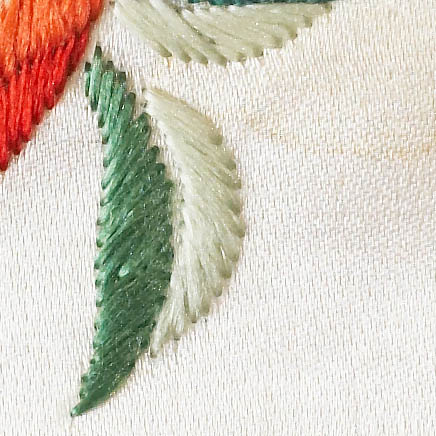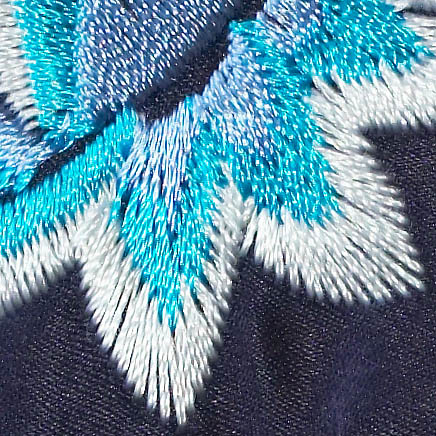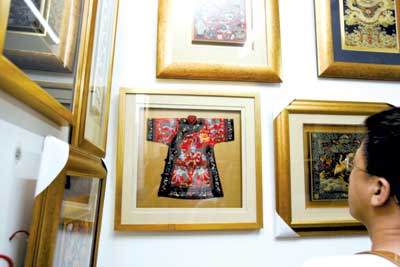

** Symbolic Images
Works of Jing Xiu embroidery incorporated deep connotation. Each piece fully signified noble prosperity, sanctified power, and graded rank, as far as embroidered animals, plants, and heavenly bodies were concerned. For example, the use of a sun pattern suggested bright future and was exploited to repel evils, whereas designs of 100 butterflies implied the desire for longevity in that "100 butterflies" sound like bai die (100 years old) in Chinese.
In addition, the pattern of "the Gold Dragon with Five Flying Claws" (Wu Zhao Jin Long) represented the emperor's absolute power and therefore nobody except the emperor himself could wear the image. Besides, as Chinese peonies are acclaimed as the queen of all the flowers, they become the first choice for the empress, queen, and princess. Differing from those in local embroideries, the broidered peony in Jing Xiu featured booming contour and exaggerated shape, marked by grand dignity.

To some extent, Jing Xiu was invaluable. As signs of noble status, its practical function had little significance and Jing Xiu items were commonly made for decoration. For example, the head ornaments, the baldric, and the sabretache (a kind of pocket or pouch) were the common subjects of the embroidery goods. Sometimes, emperors gave Jing Xiu as gifts to those talented officials.